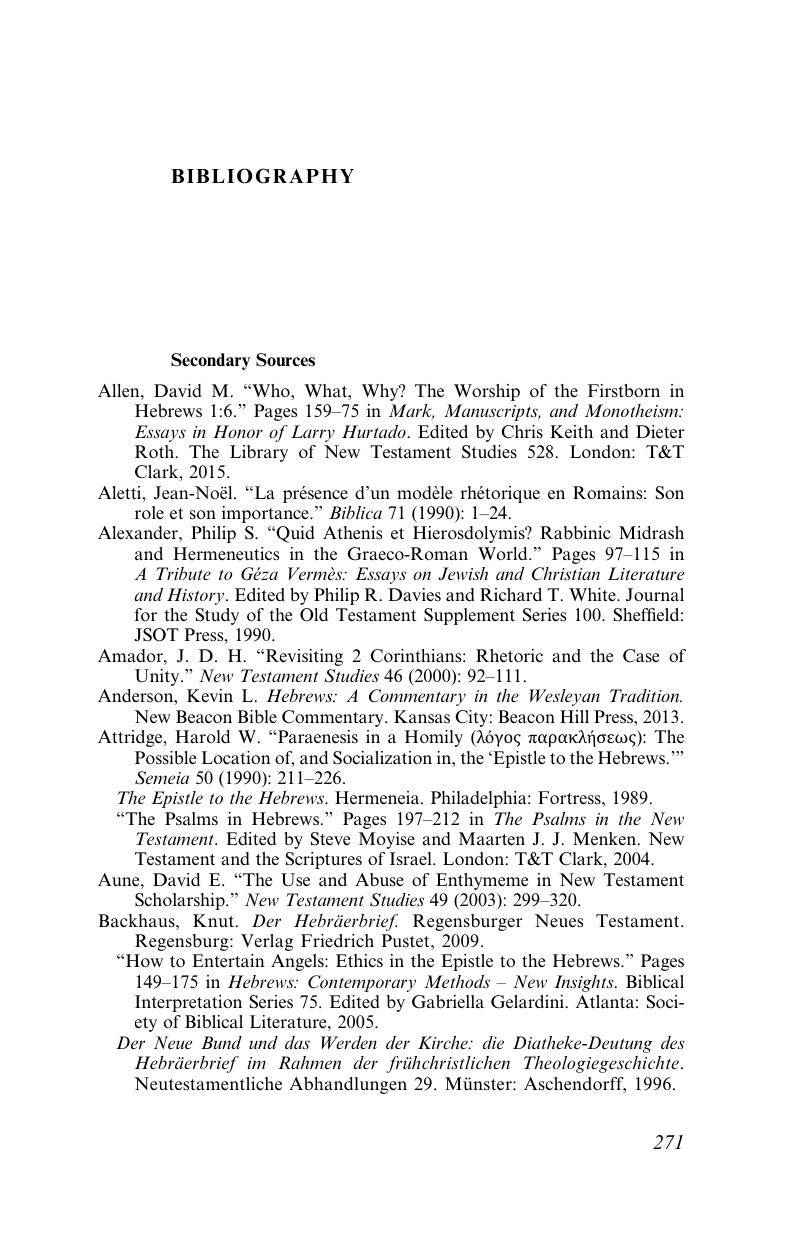Book contents
- Inventing Hebrews
- Society for New Testament Studies
- Inventing Hebrews
- Copyright page
- Dedication
- Contents
- Acknowledgements
- Abbreviations
- 1 Structuring Hebrews
- Part 1 Laying the Foundation
- Part 2 Arranging the Speech
- Bibliography
- Scripture Index
- Ancient Sources Index
- Modern Authors Index
- Subject Index
- References
Bibliography
Published online by Cambridge University Press: 15 June 2018
- Inventing Hebrews
- Society for New Testament Studies
- Inventing Hebrews
- Copyright page
- Dedication
- Contents
- Acknowledgements
- Abbreviations
- 1 Structuring Hebrews
- Part 1 Laying the Foundation
- Part 2 Arranging the Speech
- Bibliography
- Scripture Index
- Ancient Sources Index
- Modern Authors Index
- Subject Index
- References
Summary

- Type
- Chapter
- Information
- Inventing HebrewsDesign and Purpose in Ancient Rhetoric, pp. 271 - 283Publisher: Cambridge University PressPrint publication year: 2018



